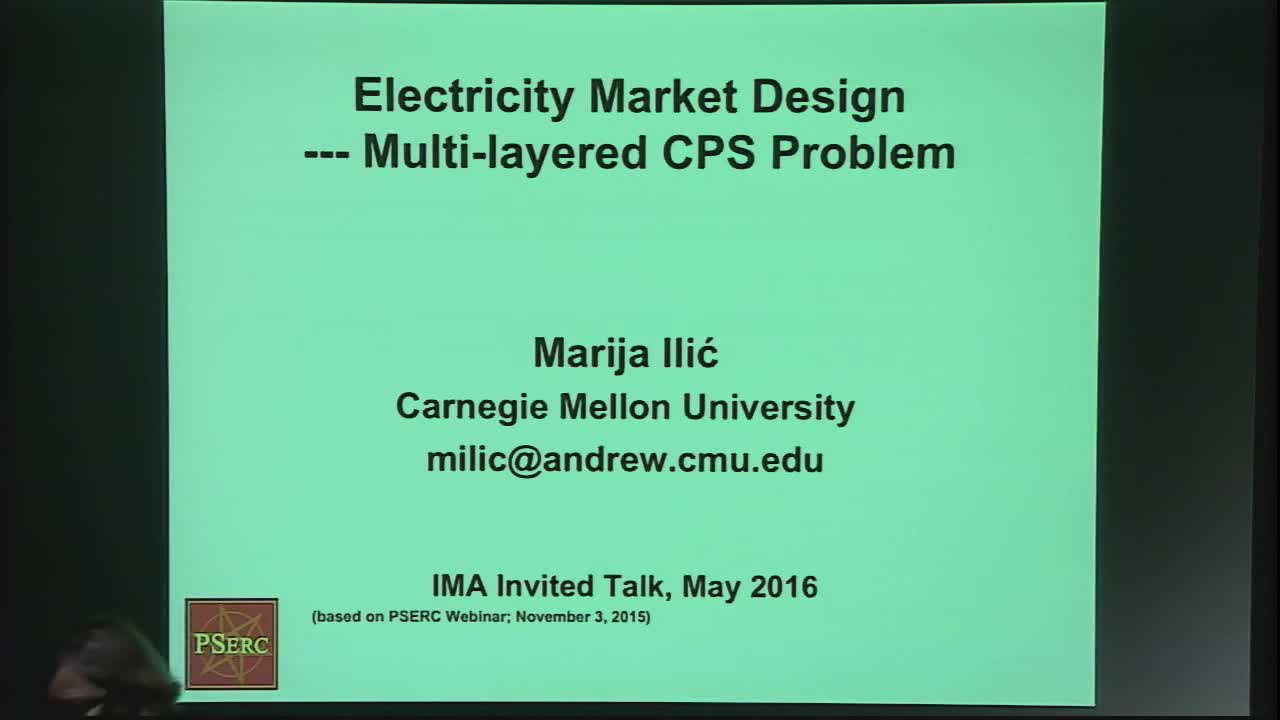Abstract
Electricity market design started by being viewed as Economics 101 application, and all of the implementation challenges pointed out earlier by the researchers in power systems engineering were viewed as the second order effects on market outcomes. After a long multi-decade road it has become clear that a systematic posing of electricity market design objectives needed to integrate physical operations of the system and market design remains a major challenge. In this talk we attempt to deal with this problem by posing it as a complex cyber physical system modeling and control design problem. We propose a unified modeling approach which supports the design of basic cyber system (information exchange) which needs to be inter-related with the physical models of hierarchical power systems. A modeling foundation is introduced for defining an earlier proposed Dynamic Monitoring and Decision Systems (DyMonDS) framework capable of specifying objectives of market design so that they are aligned temporally and spatially with the physics-based models and control objectives of the power grid. We provide simple example of why is this needed, and how it helps get over some major roadblocks currently faced by the industry. We first consider the very long time horizons for posing the open problem of aligning day-ahead/real time market design with the capacity market design; the emphasis is on dynamic distributed risk management at value. The second set of examples concerns completely different end of time spectrum. Namely, the role of automation in enabling deployment of power electronically switched equipment to avoid subsynchronous electro-mechanical and electromagnetic instabilities potentially created by poor control design. Simulations of seemingly simple systems interconnecting conventional power generation and power inverter-controlled PVs are used to point out he type of extremely fast previously unexperienced instability likely to occur in the newly emerging heterogeneous local grids (distribution systems, micro-grids). We close by returning to the question of second order effects in electricity markets as viewed by the economists. Challenges and opportunities to the systems control community are recapped in light of DyMonDS framework. Notably, this framework sets the basis for evolving the existing operation and market design principles, rather than starting from scratch. Our smart Grid in a Room Simulator (SGRS) under development in collaboration with NIST is used to illustrate the two types of examples used.
